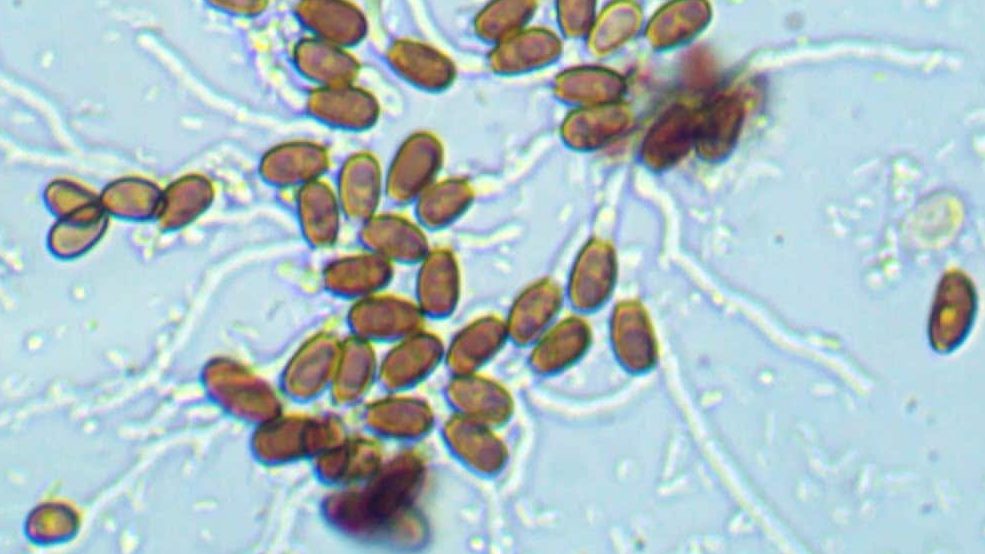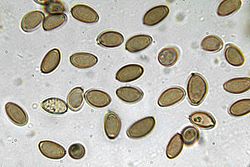Mycophiles like us at Basement Culture. are engrossed by the exquisite beauty and diversity of the mushroom kingdom. In this post, we’ll delve into the origins and characteristics of these fascinating organisms. Let’s begin by contemplating the question: What exactly are mushroom spores?
What are Mushroom Spores?
Mushroom spores are the microscopic reproductive cells of mushrooms. They are the equivalent of seeds in plants and are responsible for the growth and reproduction of mushrooms. Mushroom spores are produced in the gills or pores of the mushroom cap and are released into the air when the mushroom matures. Releasing spores allows the fungi to reproduce and ensure their continued survival.
How do Mushroom Spores Work?
When a mushroom releases its spores into the air, they are carried by the wind until they land on a suitable substrate, such as soil, wood, or decaying plant matter. If conditions are right, the spores will germinate and grow into mycelium, which is the vegetative part of the mushroom. Anyone who has ever blown on a mature dandelion will understand how a burst of air can spread seeds.
Once these spores find a suitable substrate, they “germinate” and begin to form mycelium which then grows and spreads, consuming nutrients from the substrate, until it is ready to produce a fruiting body, which is what we commonly refer to as a mushroom. The fruiting body contains the gills or pores where the spores are produced, and the cycle begins anew.

Why are Mushroom Spores Important?
Mushroom spores are crucial to the survival and propagation of mushrooms. They allow for genetic diversity within a species and provide a means for mushrooms to spread and colonize new environments. Mushroom spores also have a role in the ecosystem, as they are decomposers that break down organic matter, making nutrients available to other organisms.
Types of Mushroom Spores
There are two main types of mushroom spores: basidiospores and spores produced by Ascomycota. Basidiospores are the most common type and are produced by mushrooms that have gills or pores on the underside of the cap. Ascomycota spores are produced by mushrooms that have sac-like structures on their surface.
Some mushroom species produce spores that are unique in color, shape, or size, which can help identify the species. For example, the spores of the edible Morel mushroom are light brown and have a distinctive honeycomb-like texture.
Sexual and Asexual Spores
Mushroom spores can be classified into two categories based on their reproductive method: sexual and asexual spores.
- Sexual Spores: Sexual spores are produced through the fusion of two parent cells, each contributing half of their genetic material. The resulting spores inherit traits from both parents, allowing for increased genetic diversity in offspring. Examples of sexual spores include basidiospores and ascospores.
- Asexual Spores: Asexual spores, also known as conidia, are produced through a process called mitosis. Unlike sexual spores, asexual spores are genetically identical to the parent cell. This reproductive method is faster and more efficient but results in less genetic diversity.
Key Types of Mushroom Spores
- Basidiospores: Basidiospores are sexual spores produced by the Basidiomycota phylum, which includes many well-known species such as button mushrooms (Agaricus bisporus), shiitake mushrooms (Lentinula edodes), and oyster mushrooms (Pleurotus ostreatus). These spores are usually released from specialized structures called basidia, found on the gills or pores of the mushroom cap.
- Ascospores: Ascospores are sexual spores produced by the Ascomycota phylum, which contains species like morels (Morchella spp.) and truffles (Tuber spp.). These spores are released from sac-like structures called asci, typically found within the fruiting body of the mushroom.
- Chlamydospores: Chlamydospores are thick-walled, asexual spores that can withstand harsh environmental conditions. They are common in some soil-dwelling fungi and serve as a survival mechanism during unfavorable conditions.
- Oidia: Oidia are asexual spores formed by the fragmentation of fungal hyphae. They are commonly found in mold species such as Penicillium and Aspergillus.
Mushroom spores are intriguing and essential components of the fungal world. Their diverse shapes, sizes, and colors, along with the variety of reproductive methods and dispersal mechanisms, showcase the remarkable adaptability and resilience of fungi. The study of mushroom spores not only enhances our understanding of fungal ecology and biology but also provides us with a greater appreciation for these fascinating organisms. Ultimately, mushroom spores are an extraordinary testament to the complexity and beauty of nature.

